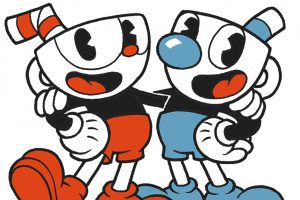“RiME” Review
A “RiME” and a Reason
Published: December 14, 2017
There is something truly beautiful about an independent game when it cannot be pinned down to a specific genre because of how dynamic it is. “RiME” knew how to tug at heartstrings with its storytelling, music and even the animation in the gameplay. The powerful components of “RiME” make for an epic adventure with soft spots for those who want a bona fide story, something to relate to.
The main character, who is an unnamed boy, starts off washed ashore and stumbles upon what looks like an abandoned city. The boy then befriends a magical fox to help him on this journey to find a mysterious red-caped man they are never able to catch. The player discovers that there is, in fact, a deeper meaning for why the boy ended up there in the first place though trials and puzzles. There is a bigger picture to every character and area players encounter throughout the game. The man in red shows the loss of a loved one of the boy. The fox who is so eager to guide him represents the boy’s desire to catch the man, even though it seems impossible to get him back.
The game has five chapters and five towers, and each tower holds a decent amount of challenges, like escaping enemies and solving puzzles that are not easy to figure out at first glance. The game has a special feature where players can pivot the point of view, almost like a turret. Using this tool for perception helps in situations like triggering scenes and opening doorways.
As far as gameplay goes, the only negative thing about it is how the game itself flows. The initial traveling in the game is a bit gritty and slow, that includes running and swimming. The slow paced movement doesn’t throw the whole thing out the window. It is, in fact, an indie game, so it won’t be perfect. “RiME” compensates for that with its simple mechanics and not-so-simple puzzles. The game consists of multiple types of puzzles: where perspective is changed, where keys and objects are used and where memory and patterns are crucial.
The game this is most similar to is any “Legend of Zelda” game, only because of the mute character, the open-world third person view and the various puzzles throughout. While “Legend of Zelda” is one of the most sought-after games of all time, “RiME” beats it fair and square in its storytelling. Even the music gives off a light-hearted tone, so it’s hard to not connect with it emotionally when playing. There’s even a song composed by the violinist Lindsey Stirling.
There tends to be positive feedback for games when the story is what got people to play. Gamers don’t want to always play the same first-person shooter that comes out every year. Some want a story, a character they can relate to. Being emotionally involved shows that developers took the time to put charismatic components in the game. “RiME” represents how games can’t always be the scapegoat for angry adolescents. It also shows that the game industry considers the preferences for all types of players.










![Varsity Boys Volleyball Fall Short Against FHC [Photo Gallery]](https://FHNtoday.com/wp-content/uploads/2025/03/IMG_0453-300x200.jpg)

![2025 Snowcoming Dance [Photo Gallery]](https://FHNtoday.com/wp-content/uploads/2025/03/Snowco2025-Hmartin-3-300x200.jpg)
![Francis Howell Boys Lacrosse Win Against O'Fallon [Photo Gallery]](https://FHNtoday.com/wp-content/uploads/2025/04/RMurrell_VBoysLacrosse_4.12.25-2-1200x800.jpg)
![JV Boys Baseball Mercy Rule Pattonville Pirates [Photo Gallery]](https://FHNtoday.com/wp-content/uploads/2025/04/JVBaseballVs.PattonvilleTaylorGriffin4_14-27-1200x800.jpg)
![Boys Varsity Baseball Takes A Win Against Orchard Farms [Photo Gallery]](https://FHNtoday.com/wp-content/uploads/2025/04/VarsityBaseball_TaylorGriffin4_11VS.OrchardFarm-42-1200x800.jpg)